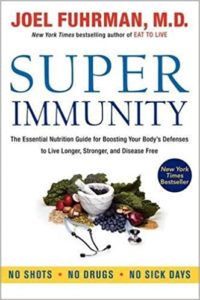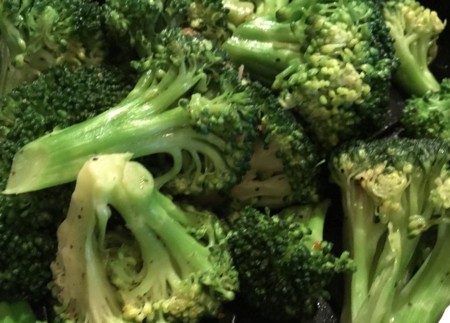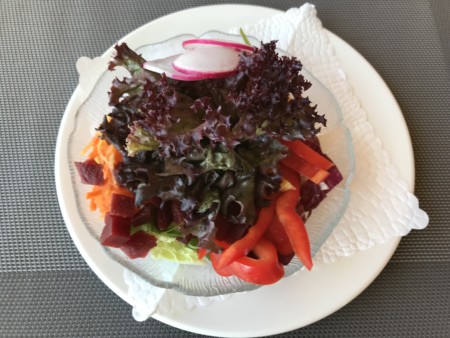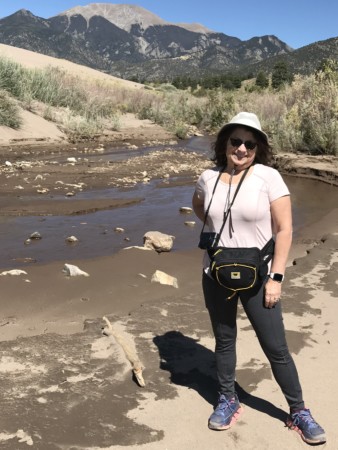
Like most Americans, I take in a daily dose of COVID-19 updates and try to make sense of the evolving ramifications of the pandemic. While news reports still indicate that people with specific pre-existing conditions and the elderly are at greater risk, a small percentage of relatively healthy people are stricken while an unknown number barely show any signs of illness.
So many questions remain unanswered as state and local governments debate the next steps. While some ideas appear logical, others seem ill-advised. When people start intermingling on a more regular basis, I can only hope that everyone will follow social distancing guidelines and adhere to public safety laws. Since it is hard to predict how my body will respond if I come into contact with the virus, I am attempting to minimize my vulnerability.
In addition to wearing a mask, following social distancing practices and washing my hands, is there anything I can do to lessen the possibility of becoming sick from COVID-19?
 I am convinced that it is not a time to remain idle and hope nothing will happen. Nor can I remain cloistered in my home indefinitely. During my quest for information, I read Dr. Joel Fuhrman’s book, Super Immunity: The Essential Guide for Boosting Your Body’s Defenses to Live Longer, Stronger, and Disease Free. Without a medical or science background, I cannot say for certain whether his theories are completely accurate. Fuhrman is recognized as an expert on nutrition and natural healing and is the president of the Nutritional Research Foundation. He has authored seven New York Times best-selling books.
I am convinced that it is not a time to remain idle and hope nothing will happen. Nor can I remain cloistered in my home indefinitely. During my quest for information, I read Dr. Joel Fuhrman’s book, Super Immunity: The Essential Guide for Boosting Your Body’s Defenses to Live Longer, Stronger, and Disease Free. Without a medical or science background, I cannot say for certain whether his theories are completely accurate. Fuhrman is recognized as an expert on nutrition and natural healing and is the president of the Nutritional Research Foundation. He has authored seven New York Times best-selling books.
Libraries and bookstores are filled with hundreds of controversial diet and nutrition books. Authors sometimes cherry-pick scientific studies to support their agenda. Since time does not permit a thorough analysis of all the scientific studies referenced in the book’s detailed endnotes, I am hoping that Dr. Fuhrman presented a balanced view of the information available before he published the book in 2011, and that the research gathered after that year does not conflict with his findings. His website offers links to his recent research and other books.
Spotlight on Super Immunity: The Essential Guide for Boosting Your Body’s Defenses to Live Longer, Stronger, and Disease Free
Super Immunity introduces readers to the connection between food choices and good health. In the Introduction, Fuhrman states that by “Utilizing a combination of foods that are rich in powerful immunity-strengthening phytochemicals and micronutrients, it’s possible to prevent most common modern diseases.” (Page 9) His list of ailments includes everything from viruses to cancer. As an advocate of the term “Food Equals Health,” he is reinforcing the common adage, you are what you eat.
Since a significant number of Americans rely on processed foods and selections from fast-food restaurants, it is easy to see why many people develop vitamin and mineral deficiencies. Dr. Fuhrman cites long-term observational studies that “demonstrate that vegetable consumption is the most important factor in preventing chronic disease and premature death.” (page 16) Fresh vegetables are often hard to find at fast-food restaurants and are not part of the processed food industry. I observed the lack of nutrient-dense foods at the nation’s top fast-food restaurants when I did the research for my Far & Wide story, 25 of the Healthiest Fast-Food Options.
Dr. Fuhrman points out that the “longest-living populations throughout history have been those with the highest intake of vegetables in the diet.” (Page 19) Near the mid-point of the book, he elaborates further. “The most consistent and proven concept in the history of nutritional science is that the combination of high-nutrient intake and low-caloric intake promotes disease resistance and longevity.” (Page 111) He uses the formula: Health = Nutrients/Calories to accentuate this point.
Nutrient-Dense Plant Foods
While promoting the positive benefits of eating nutrient-dense plant foods (fruits, vegetables, beans, seeds, and nuts), Fuhrman advocates that plant food should be the focal point of one’s diet. As a result, his food pyramid offers a totally different perspective from the more well-known food pyramid which places an emphasis on bread, cereal, rice, and pasta. The base of Fuhrman’s pyramid is vegetables, and he highly recommends people avoid beef, sweets, processed foods, eggs, oil, fish, and fat-free dairy products. (Page 28)
Can our diet affect our immunity against viruses? If you agree with Fuhrman, the answer is yes.
Diet and Viruses
It is common sense to believe that people in poor health are more vulnerable to disease. However, until I read this book, I hadn’t considered the total impact of diet. “However, though it is not generally recognized, the virus adapts itself to the host (our body) and becomes dangerous and multiplies as a result of the host’s disease-promoting environment, created by nutritional inadequacy. In most cases, a virus, when exposed to a healthy, well-nourished body, would remain harmless. Our vulnerability to the initial virus and our inability to fight off the virus once we have become exposed is directly affected by the quality of our diet prior to being exposed. This means that poor nutrition not only makes us susceptible to viruses but significantly impacts the length and severity of illness.” (Page 29-30)
After reading the above paragraph a couple of times, I wondered if it was possible to determine where the tipping point occurred. In other words, were certain deficiencies more harmful than others. Within a few pages, Fuhrman partially answered this question by stating, “If you are deficient in virtually any known vitamin or mineral, research has shown that your defense functions can be negatively affected.” (page 33)
Fuhrman elaborated further when he mentioned a study that examined patients who developed nerve damage after a viral illness. “Those people whose nervous systems were damaged by a virus were found to be deficient in riboflavin, vitamin E, selenium, alpha- and beta-carotene, and lycopene. When patients were supplemented with these nutrients, the disease began to subside, suggesting that the pathogenicity of a particular virus—that is, the ability of a pathogen to produce an infectious disease—is dependent on the nutritional status of the host.” (Page 34)
Fuhrman clearly advocates a diet devoid of animal products. While he poses several reasons why animal products should be avoided, I remain fixated on one of them. “Taking in more protein, especially animal protein, than your body needs is not a small matter. It ages you prematurely and can cause significant harm.” (Page 123) To gain a complete understanding of the possible shortcomings of eating animal-based foods, I recommend reading Fuhrman’s explanation.
Despite his warnings, I question whether it is possible to acquire sufficient immunity while eating a minimal amount of animal-based food products. Reaching the age of 90 is not solely determined by a vegetarian diet and only a certain percentage of the population is willing to become a vegetarian or vegan.
Vaccinations
For weeks, reporters have been focusing on the race to create a COVID-19 vaccine. After reading what Fuhrman has to say about the efficacy of flu vaccinations, I am left shaking my head. He feels that these injections offer minimal benefit despite the fact that flu vaccinations are recommended by governments and medical authorities. Moreover, Fuhrman mentions that at the time of the book’s publication a significant number of the members of the CDC’s Advisory Committee on Immunization Practices were connected financially to the vaccine industry. This is a definite conflict of interest. After reading through the list of known adverse reactions to flu vaccinations, I once again was forced to contemplate whether a COVID-19 vaccine will be the panacea that people are touting. (Page 49-51)
Most of the book focuses on the relationship between diet and health. To provide a small sampling, I will point out a few segments.
Ranking Vegetables

“All vegetables contain protective micronutrients and phytochemicals, but cruciferous vegetables have a unique composition: they have sulfur-containing compounds that are responsible for their pungent or bitter flavors. When their cell walls are broken down by blending or chopping, a chemical reaction occurs that converts these sulfur-containing compounds into isothiocyanates (ITC’s).” (Page 63) “These ITC’s have been shown to increase the immune system’s cell-killing capacity and heighten resistance to viral infections with impressive results.” (page 65)
To maximize the benefits of cruciferous vegetables, Fuhrman recommends the following:
- Chew all cruciferous greens very, very well, trying to crush every cell.
- Puree, blend, or chop cruciferous vegetables before adding them to stews or soups.
- When steaming green cruciferous vegetables such as broccoli and cabbage, try to undercook slightly so they are not mushy. (pages 68-69)
Anti-Angiogenic Foods
Another section delves into the positive benefits of eating anti-angiogenic foods. This group includes onions, berries, black rice, cinnamon, citrus fruits, cruciferous vegetables, flax seeds, ginger, green tea, cooked mushrooms, omega 3 fats, peppers, pomegranates, quince, resveratrol, soybeans, spinach, tomatoes, and turmeric. (Page 75)
Zinc and Vitamin D
Recently, some doctors have included zinc supplements in their care of COVID-19 patients. After reading Fuhrman’s discussion about zinc, I have a better understanding of why zinc may help COVID-19 patients. “Zinc deficiency leads to dysfunction of both antibody-mediated (humoral) and cell-mediated immunity and thus increases susceptibility to infection.” (Page 102) When he cites the Cochrane meta-analysis, he mentioned numerous benefits of having adequate levels of zinc. “The review found that not only did zinc reduce the duration and severity of common cold symptoms, but regular zinc use also works to prevent colds, leading to fewer school absences, and less antibiotic use in children.” (Page 103) Fuhrman also discusses the importance of Vitamin D. “Vitamin D deficiency has been associated with an increased risk for influenza.” (Page 104)
Additional Recommendations

In Chapter Five, Fuhrman focuses on healthy carbs, fats, and proteins. A chart showcases the top 25 superfoods and another list singles out five foods considered deadly.
25 Super Foods (page 131)
Collard, mustard, turnip greens. Cauliflower
Kale Red & green bell peppers
Watercress Mushrooms
Swiss chard Asparagus
Bok Choy Tomatoes
Cabbage Berries
Spinach Pomegranates
Arugula Grapes
Lettuce- Cantaloupe
Boston, romaine, red & green leaf
Brussel sprouts Onions
Carrots Flax, sunflower, sesame, hemp & chia seeds
Broccoli Nuts
5 Deadliest Foods
- Barbecued meat, processed meat, and commercial red meat
- Fried foods
- Full-fat dairy cheese, ice cream, butter, whole milk, and trans fats
- Soft drinks, sugar, and artificial sweeteners
- White-flour products
Exercise

Before sharing a chapter of menus and recipes, Fuhrman offers additional information on how to make good choices. Interestingly, the role of exercise is introduced in this section.
“The researchers found that the frequency of colds among people who exercised five or more days a week was up to 46 percent less than that of people who were largely sedentary—that it, who exercised only one day or less a week.” (Page 143)
“Exercise not only helps your immune system fight off simple bacterial and viral infections: it also decreases your chances of developing heart disease, osteoporosis, and cancer. “(Page 143)
Concluding Thoughts
Should you consider a diet filled with nutrient-dense foods and anti-inflammatory foods like ginger and turmeric along with avoidance of salt, wheat, oil, and processed foods? Is it possible that this type of diet will offer immunity against COVID-19? While it may not be possible to determine whether Fuhrman’s guidelines will protect you against COVID-19, many of his ideas may be worth implementing for overall health benefits and longevity. At the very least, I’d consider including as many top 25 superfoods as possible into your weekly diet.
Can you share your opinion?
Does your diet affect your overall health?
RELATED POSTS
Active Lifestyles Versus the Aging Process
5 Ways to Improve Exercise Motivation
BIO
When Sandy isn’t trekking or writing in the Colorado Rockies, she is traveling. She has visited more than 40 countries and lived as an international teacher in Bangalore, India. Sandy shares her lifestyle and travel experiences with international and domestic online sites and print media.
Her stories have appeared in Hemispheres, Destinations Magazine, KUHL’s Born in the Mountain blog, Grand Magazine, Wandering Educators, Golden Living, One Travel, Miles Away, Canadian Jewish News, Getting On Travel, Far and Wide, Colorado Parent, Traveler Confidential, Family Circle- Momster, and others.
Sandy’s award-winning book, May This Be the Best Year of Your Life, is a resource for people contemplating an ex-pat lifestyle and living outside their comfort zone. To learn more about Sandy’s travel adventures, visit https://thetravelingbornsteins.com/
Connect with Sandra